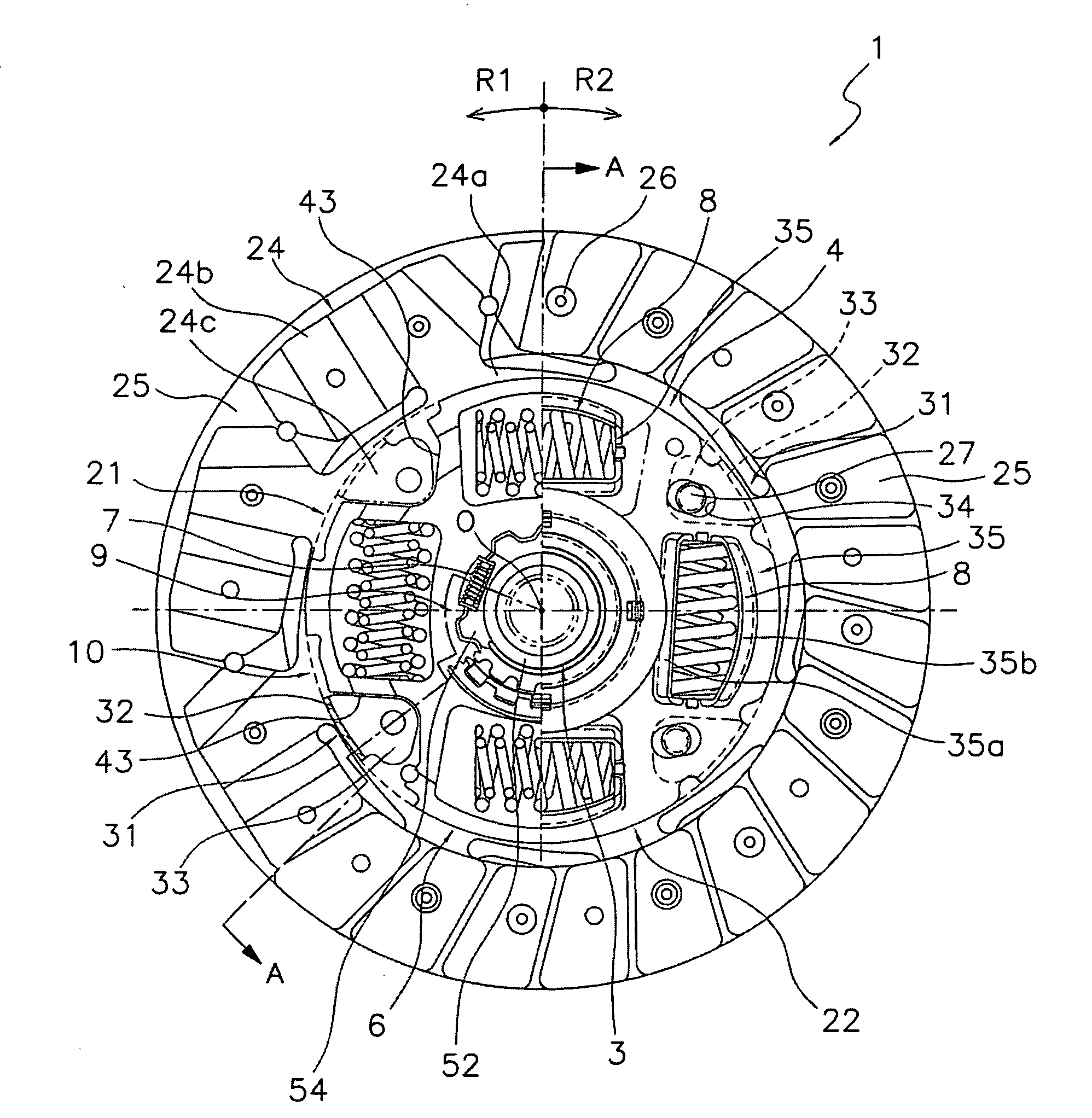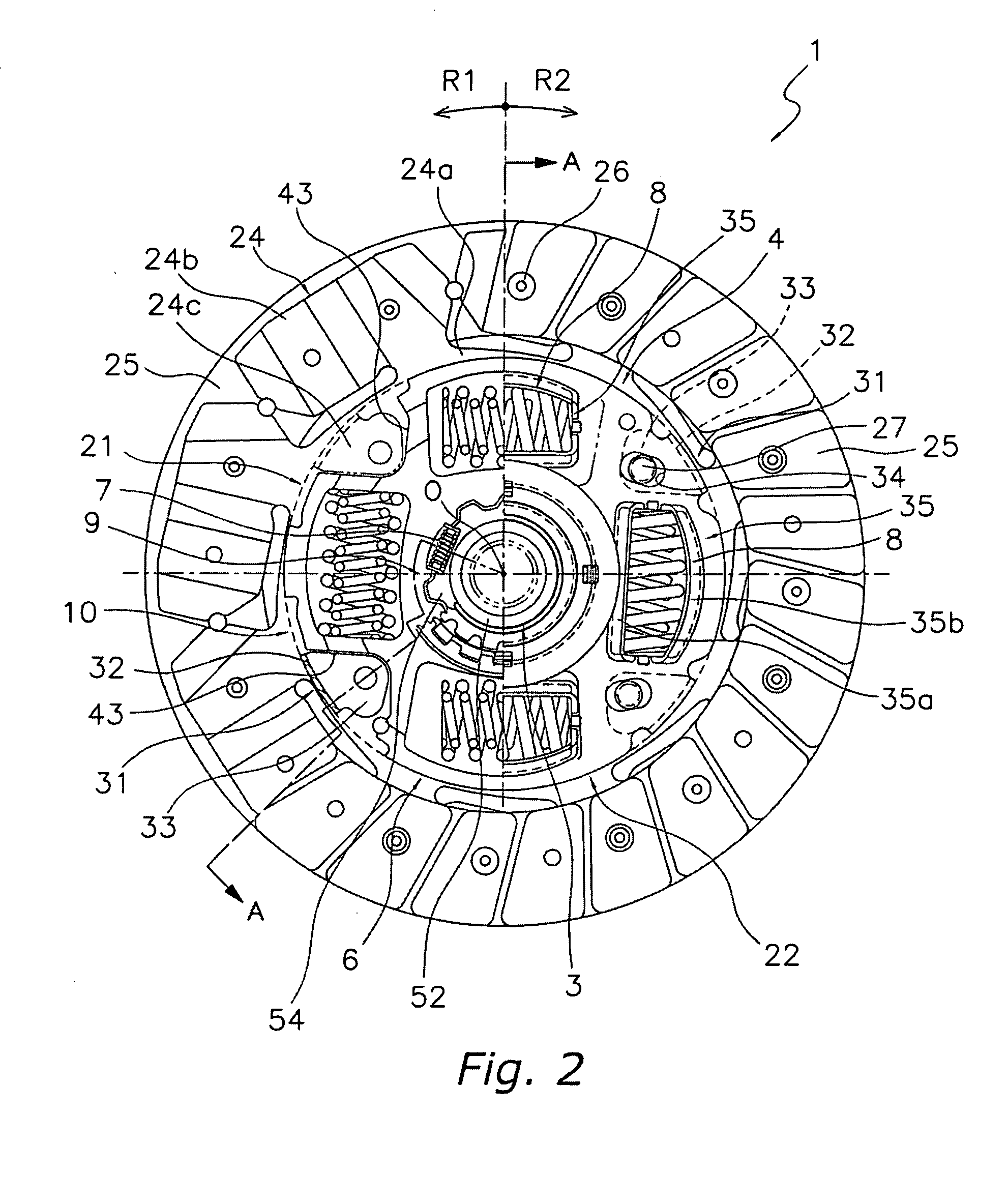Damper mechanism
a technology of adamper mechanism and a spring, which is applied in the direction of mechanical actuator clutches, couplings, mechanical apparatus, etc., can solve the problems of large coil springs, limited coil spring layout, and inability to adapt to greater variation in torsional characteristics, etc., and achieves the effect of simple structur
- Summary
- Abstract
- Description
- Claims
- Application Information
AI Technical Summary
Benefits of technology
Problems solved by technology
Method used
Image
Examples
Embodiment Construction
[0036]An embodiment of the damper mechanism pertaining to the present invention will now be described through reference to the drawings. The example described here is of a clutch disk assembly in which a damper mechanism is installed.
1. Overall Configuration of Clutch Disk Assembly
[0037]A clutch disk assembly 1 in which a damper mechanism 4 pertaining to the present invention has been installed will be described through reference to FIG. 1 or 2. FIG. 1 is a simplified vertical cross section of the clutch disk assembly 1, and FIG. 2 is a simplified elevational view of the clutch disk assembly 1. The O-O line in FIG. 1 is the rotational axis of Th clutch disk assembly 1. Also, an engine and a flywheel (not shown) are disposed on the left side in FIG. 1, and a transmission (not shown) is disposed on the right side in FIG. 1. Further, the R1 side in FIG. 2 is the rotational direction drive side (positive side) of the clutch disk assembly 1, while the R2 side is the opposite side (negati...
PUM
 Login to View More
Login to View More Abstract
Description
Claims
Application Information
 Login to View More
Login to View More - R&D
- Intellectual Property
- Life Sciences
- Materials
- Tech Scout
- Unparalleled Data Quality
- Higher Quality Content
- 60% Fewer Hallucinations
Browse by: Latest US Patents, China's latest patents, Technical Efficacy Thesaurus, Application Domain, Technology Topic, Popular Technical Reports.
© 2025 PatSnap. All rights reserved.Legal|Privacy policy|Modern Slavery Act Transparency Statement|Sitemap|About US| Contact US: help@patsnap.com



